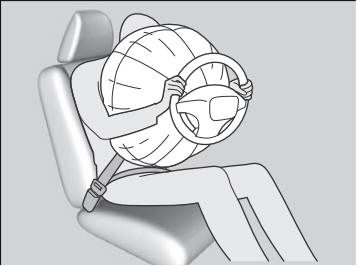Honda CR-V: Checking and Maintaining Tires / Checking Tires
To safely operate your vehicle, your tires must be of the proper type and size, in good condition with adequate tread, and properly inflated.
Inflation guidelines
Properly inflated tires provide the best combination of handling, tread life, and comfort. Refer to the driver’s doorjamb label or specifications page for the specified pressure.
Underinflated tires wear unevenly, adversely affect handling and fuel economy, and are more likely to fail from overheating.
Overinflated tires make your vehicle ride harshly, are more prone to road hazards, and wear unevenly.
Every day before you drive, look at each of the tires. If one looks lower than the others, check the pressure with a tire gauge.
At least once a month or before long trips, use a gauge to measure the pressure in all tires, including the spare. Even tires in good condition can lose 1–2 psi (10–20 kPa, 0.1–0.2 kgf/cm 2 ) per month.
Inspection guidelines
Every time you check inflation, also examine the tires and valve stems.
Look for:
- Bumps or bulges on the side or in the tread. Replace the tire if you find any cuts, splits, or cracks in the side of the tire. Replace it if you see fabric or cord.
- Remove any foreign objects and inspect for air leaks.
- Uneven tread wear. Have a dealer check the wheel alignment.
- Excessive tread wear.
- Cracks or other damage around valve stem.
WARNING
Using tires that are excessively worn or improperly inflated can cause a crash in which you can be seriously hurt or killed.
Follow all instructions in this owner’s manual regarding tire inflation and maintenance.
Measure the air pressure when tires are cold. This means the vehicle has been parked for at least three hours, or driven less than 1 mile (1.6 km). If necessary, add or release air until the specified pressure is reached.
If checked when hot, tire pressure can be as much as 4–6 psi (30–40 kPa, 0.3–0.4 kgf/cm 2 ) higher than if checked when cold.
Whenever tire pressure is adjusted, you must calibrate the TPMS.
Have a dealer check the tires if you feel a consistent vibration while driving. New tires and any that have been removed and reinstalled should be properly balanced.
Check the spare tire pressure once a month or before long trips.
 Tire and Loading Information Label
Tire and Loading Information Label
The label attached to the driver’s doorjamb provides necessary tire and
loading
information.
The tire and loading information label attached to the
driver’s doorjamb contains:
The number of people your vehicle can carry...
Other information:
Honda CR-V 2017-2025 Owner's Manual: Interior Fuse Box
Fuse Box A Located under the dashboard. Fuse locations are shown on the label on the steering column lower cover. Locate the fuse in question by the fuse number and label number. Circuit protected and fuse rating * Not available on all models *1:Models with smart entry system *2:Models without smart entry system Fuse Box B Located under the dashboard...
Honda CR-V 2017-2025 Owner's Manual: Types of Airbags
Your vehicle is equipped with three types of airbags: Front airbags: Airbags in front of the driver's and front passenger's seats. Side airbags: Airbags in the driver's and front passenger's seat-backs. Side curtain airbags: Airbags above the side windows...
Categories
- Manuals Home
- Honda CR-V Owners Manual
- Honda CR-V Service Manual
- Wallpaper Setup
- USB Port(s)
- Multi-View Rear Camera
- New on site
- Most important about car
How the Front Airbags Work

While your seat belt restrains your torso, the front airbag provides supplemental protection for your head and chest.
The front airbags deflate immediately so that they won't interfere with the driver's visibility or the ability to steer or operate other controls.

